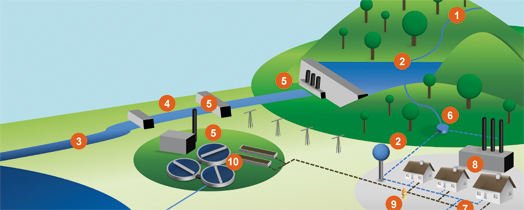The operators of water infrastructure systems are often confronted with conditions which are by no means static. Changes in climate lead to unusual rainfalls and to changes in the distribution of precipitation.
The amount of water required is changing because populations are dwindling and aging fast resulting in changes in behavior patterns for water use.
For wastewater disposal, this means changes not only in the amount of wastewater produced but also in its composition and loads.
New environmental rules, e.g. for the use of rainwater or elimination of additional pollutants, also mean that new treatment technologies and approaches must be developed and applied.
Existing and future water infrastructure concepts will have to be tested and evaluated for their ability to cope with such changes in marginal conditions. This is the only way to find suitable concepts for the conditions prevailing in specific local regions as these can differ extremely.
 Fraunhofer Water Systems Alliance (SysWasser)
Fraunhofer Water Systems Alliance (SysWasser)